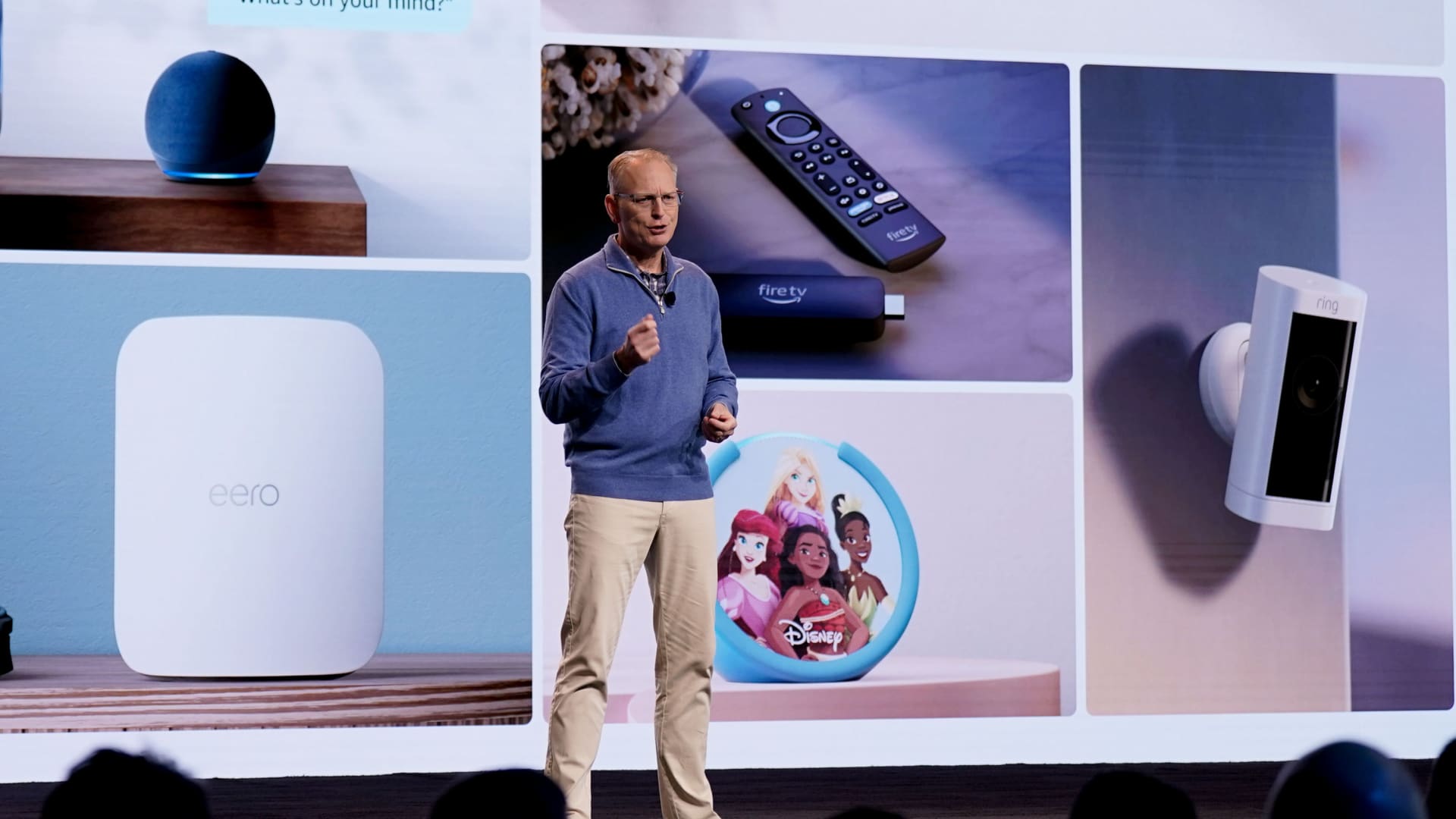

Dave Limp, senior vice president of devices and services at Amazon.com Inc., speaks during the Amazon Devices and Services event at the HQ2 campus in Arlington, Virginia, on Sept. 20, 2023.
Al Drago | Bloomberg | Getty Images
Amazon introduced a “smarter and more conversational” version of its Alexa voice assistant that the company hopes will bolster its position in the tech industry’s artificial intelligence race.
The company hosts an annual devices bonanza, where it typically unveils a smattering of new hardware and software products. In his final keynote address at the event on Wednesday, Amazon’s devices chief Dave Limp showed off a demo of an updated Alexa that’s freshly equipped with features powered by generative AI.
Limp, a 13-year veteran of Amazon, plans to step down from his role later this year.
From an event space at its new second headquarters in northern Virginia, Amazon showed a montage in which Alexa users were seen asking an Echo smart speaker for information such as the “best dates to travel to Puerto Rico.” One man requested that Alexa tell him a story about balloons, before abruptly changing his mind and asking for a tale about Jell-O.
There were a few hiccups during Limp’s demo. At times, Alexa lagged in its response, and at a few points, Limp had to repeat his question to get an answer.
Amazon calls the new feature “Let’s chat,” and said it will be available as an “early preview” for existing Echo owners in the coming weeks.
The new Alexa will have a more humanlike voice and is able to hold more natural conversations without being prompted by a wake word. It will also learn about users with each new interaction.
Similar to ChatGPT or other generative AI applications, Alexa will be able to compose messages for users and send them on their behalf. As an example, Amazon showed an invitation that Alexa wrote to a friend, asking the person to come over for a football game.
Rohit Prasad, a senior vice president at Amazon and head scientist overseeing generative AI, gave another sports example.
“The Red Sox are my favorite team,” Prasad said. “Imagine if they won, then Alexa would respond in a joyful voice. If they lost, it will be empathetic to me.”
Amazon previewed ways it’s using AI to better operate smart homes. With upcoming Alexa updates, users will be able to make more conversational requests, like asking the voice assistant to make their lights “look spooky” or say “Alexa, there’s a mess in here,” prompting a robot vacuum to switch on and suck up crumbs.
Limp employed the phrase “AI hallucinations,” a term that describes mistakes made by AI models, to explain how Alexa would do better.
“It would be incredibly frustrating if it hallucinated and turned on the wrong light over and over again,” Limp said, adding that Amazon’s AI models are fine-tuned to be able to work with various smart home applications, so that when “you ask it to turn on the living room light, it’s able to execute that correctly.”
Amazon also debuted new hardware, including an updated Echo Show 8 smart speaker. The device uses computer vision to adjust its display based on where the user is standing in a room. If they’re farther away, it will show fewer items on screen, but as they move closer, it will show more detailed information. Amazon said the device costs $150 and will ship in October.
It also unveiled a $120 Fire TV sound bar that’s available starting Wednesday, and two new Fire TV Sticks that the company says are faster and feature upgraded processors.
Amazon showed a new feature coming to the Alexa App and Echo Hubs, called Map View, which is essentially a digital floor plan of a user’s home. The feature is designed to make it simpler for users to manage their smart home devices. It could also provide a wealth of valuable data for Amazon to understand how people organize their smart home. Amazon says it’s opt-in only, and users select which rooms they want to add to their floor plan. They’re able to delete the data at any time.





